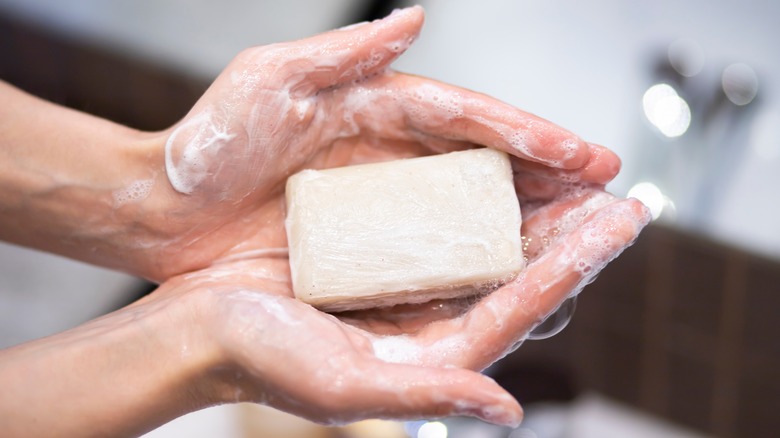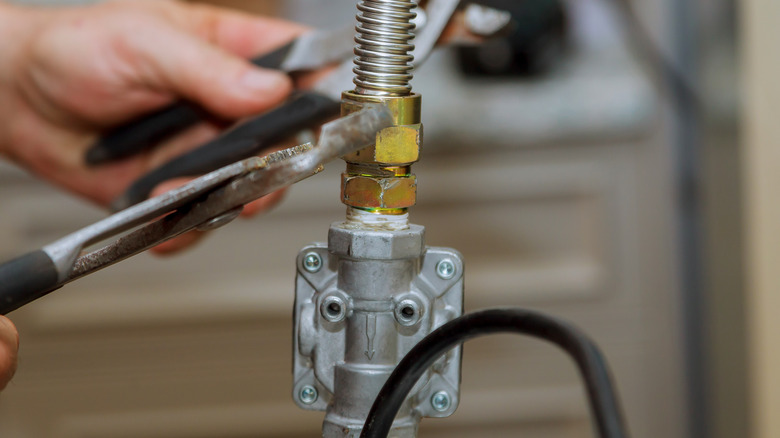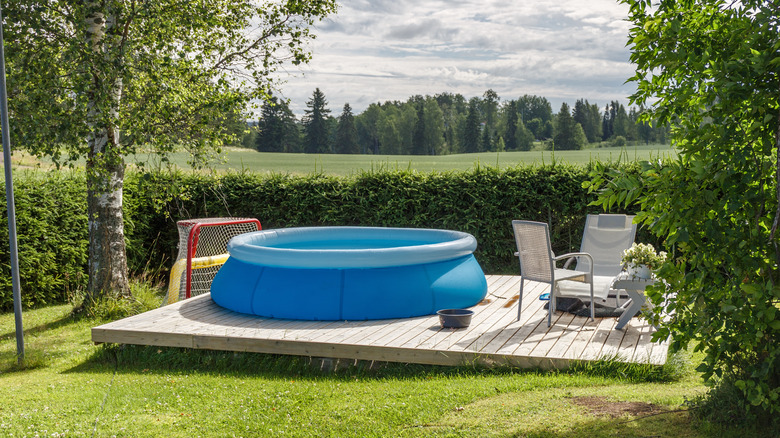How To Use A Bar Of Soap To Locate A Leak
Soap is one of the most important products you use daily to keep germs at bay and surfaces clean. You may not know it has other uses, however, including working as a potential way to locate a leak. You can use soap to spot a leak in an inflatable swimming pool, the tire on your child's bike, or even gas leaking into your home from a damaged line under a stove. While it does not replace a professional in its ability to ensure your family is safe from things such as a gas leak, it could help detect it nonetheless.
Why is soap so seemingly magical in this way? The answer is found in the bubbles created when you rub the soap against a surface with just enough water. The way the molecules in soap react is by spreading across the surface, allowing for bubbles to form when there's movement of air. The science behind this may be interesting, but when it comes to practicality, there are a few ways that soap can help you detect a leak.
Pinpointing a dangerous gas leak
While it's possible to smell a gas leak, this isn't always the case –that's what makes these problems so concerning. Natural gas can build in a space over a long period, and as that happens, the risk of fire builds. The odors themselves could make you ill. These leaks often occur due to a bad connection between the gas line and your stove, water heater, furnace, or dryer.
Consider the soap trick if you suspect a gas leak but aren't sure where it's occurring. Take any bar of soap and run it underwater. Apply it to your hands as if you were going to wash them, just don't rinse. Rub the soap over the area you suspect of a gas leak, such as the connection point on the line. You just need to get a thin application of soap on the surface. Then, stop touching it and watch what happens. If you see bubbles forming, even if they pop, that could indicate the presence of gas leaking from the pipes.
Let's be clear though. If you suspect any type of gas leak in your home, it's best to leave the space and call the fire department. They'll be able to ensure your home is safe.
Use soap to detect air leaks
Perhaps you have one of those pools that has an air-filled ring at the top. You have no idea why it isn't staying inflated since you can't find an obvious hole. You can use the same soapy test to help pinpoint an air leak like this. Since this may be a big surface, it's helpful to apply the suds over a small area at a time and then move on if you don't find the leak. Just watch for the bubbles to form to know where you need to patch the swimming pool.
You can use this method on most types of surfaces with compressed air in them. That is, the air within must be enough to push against the surface of the item, wanting to escape. This can help with the backyard garden hose leak, shut-off valves for your water lines, the water pressure regulator, some types of filters, and pipe joints. It's not always a foolproof method, and in some cases, it may take a long time to find the leak, especially if it is very small.


